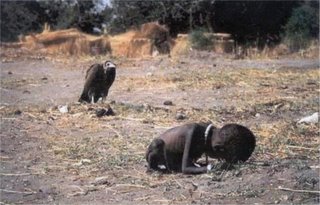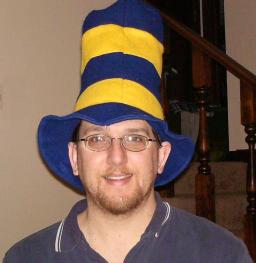I don't think the title was
meant to be humorous.
Marcia Segelstein has a guest column at OneNewsNow, titled
Intelligent Design for dummies. (Ron Britton at Bay of Fundie replies,
Why Yes! Yes It Is!)
Segelstein claims not to be interested in the whole debate over ID:
As far as I was concerned, all that mattered was my belief that God created the universe and everything in it. How He did it, when He did it, and what complex processes were involved were beyond my extremely limited understanding. They still are. And what continues to matter most to me is that God get the credit for creation.
And yet, she is drawn to the story of one Brian Westad. His experience
made me understand how the predominance of Darwinism can be a stumbling block to faith, even for believing Christians.
In short, Westad learned about evolution in college, but had trouble reconciling it with his belief in an active God. He leaned toward theistic evolution for a while, but began to drift toward atheism.
Then Westad began a research project with another student who introduced him to ID and to Michael Behe's book,
Darwin's Black Box. Behe is the originator of the hypothesis of "irreducible complexity," the idea that some things in this world — the rotating flagellum of certain types of bacteria, the blood clotting cascade found in most vertibrates — simply would not work until all the parts were assembled.
Behe's ideas gave Westad a reason to believe again. Westad is now the Executive Director for the IDEA Center, a non-profit organization for promoting ID in schools.
Blech.
Segelstein's article contains some glaring errors: She calls Phillip Johnson "a leading I.D. scientist." Though he is by profession an attorney, a college professor, an author, and a leading strategist for the ID movement, he is not a scientist. Segelstein refers to "
the fact that the bacterial flagellum could only function when all its components were present simultaneously." [emphasis mine] Unfortunately, other scientists have discovered ways in which the flagellum
could have been built in stages.
But that's really beside the point. The point of Segelstein's article is that "Darwinism" can be a stumbling block to faith, and that ID is more sympathetic toward Christianity.
This view is disturbing on more than one level.
First, and most basic, is this: We are not allowed to choose our science based on how easily it integrates with our faith. It doesn't matter whether ID meshes better with what we
want to believe. What matters is which hypothesis gives us a more complete understanding of the workings of the natural world. Just by the way the hypothesis was formed, ID cannot win that battle; it insists that some things are just too complicated to explain.
But ID is disturbing at a deeper level as well. Segelstein's article makes a big deal about Westad's difficulties reconciling evolution with faith in God. Yet, for me at least, ID presents the greater challenge.
Proponents of ID ask us to believe in a creator who went to great lengths to build a rotary motor to help H.pylori and E.coli bacteria navigate our digestive tracts. Yet this same creator sits idly by while 25,000 children die every day, most from preventable diseases.
The ID proponents say their hypothesis tells us nothing about the creator. I disagree. We can infer from the ID hypothesis that this creator cares more about germs than humans. I don't see any way of reconciling the implications of ID with Christianity.
I grant that if Christians accept the modern evolutionary synthesis, we still have to grapple with a God who lets 25,000 children die every day. Still, that is a problem for Christians of all stripes, including those who believe in young earth creationism and those who maintain that we can't possibly know how we got to this point. But only the ID proponents propose a model in which the creator shows such loving care for the little germs that can make us sick or kill us.
If that's not a stumbling block for Christians, I don't know what is.
Labels: creationism, evolution, intelligent design, theology








